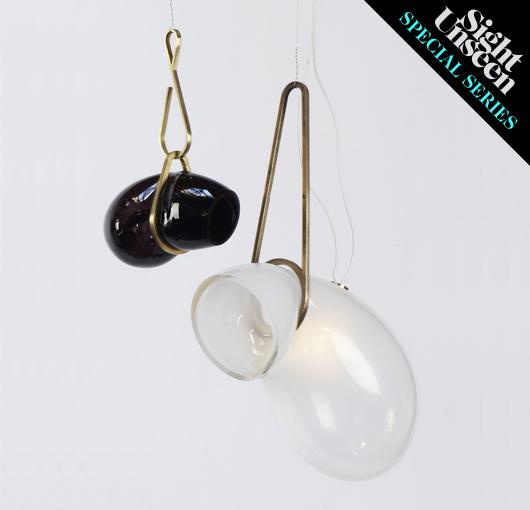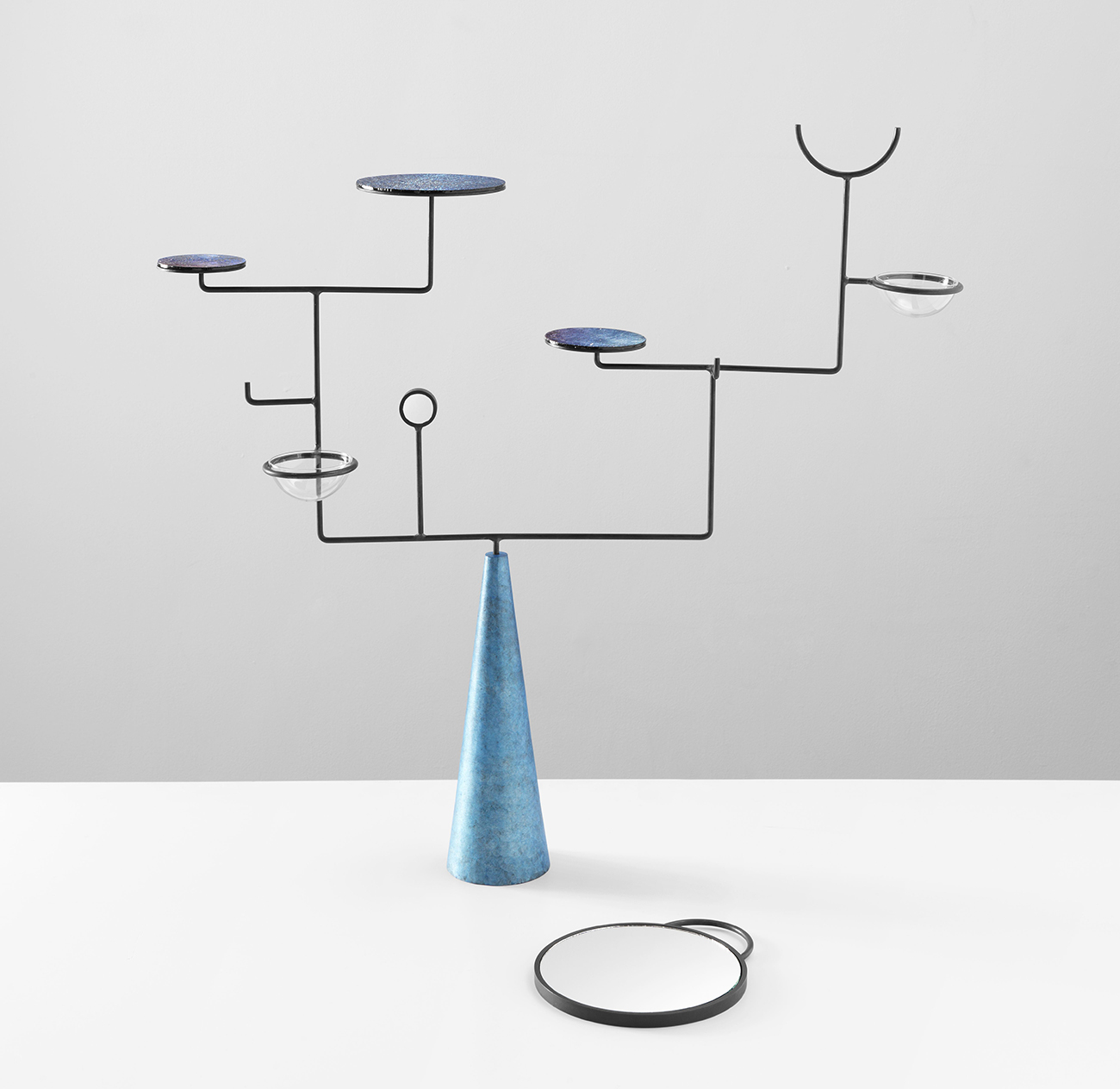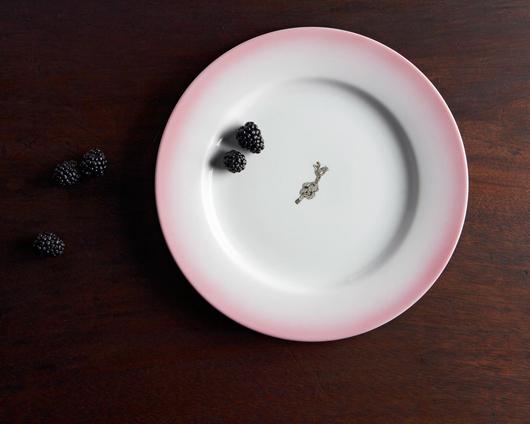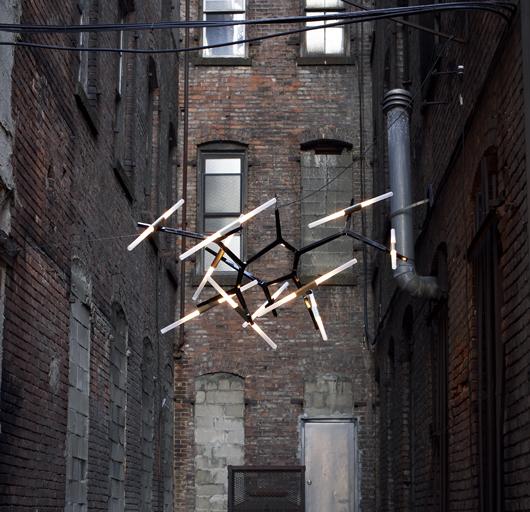
03.12.12
Sighted
Lindsey Adelman, Agnes Electro Chandelier
For all of their industrial elements — cold metal surfaces, exposed screws and joints — Lindsey Adelman’s light fixtures are better known for their refined sense of timelessness, and the way their easy aesthetic appeal allows them to slip perfectly into everything from socialites’ Park Avenue apartments to the James Hotel. And yet if you ask the New York–based designer what kind of environment she prefers to picture her chandeliers in, she conjures the dirtiest, darkest urban corners, delighting in how this fantasy contrasts with the realities of her everyday contract work. She got her wish last May, when she took over a windowless corner of the Noho Design District’s 45 Great Jones building, a former lumber warehouse that was barely fit for visitors, much less a pair of $30,000 lamps. Last month, at Sight Unseen’s behest, she created this similar scene outside the window of her own studio, featuring a new edition of her Agnes chandelier for Roll & Hill. Adelman also shot two other soon-to-be-released products that day, and we’ll debut those images in the coming weeks, but in the meantime, we asked her to tell us exactly how (and why) she got the shot.
“I had this version of the Agnes chandelier customized with a glossy black-lacquer surface, exposed brushed-brass screws, and matching socket cups, so it felt like this very clean, refined object even though it’s kind of Darth Vader-y. We wanted something that contrasted with the piece, that would highlight the glass tubes so they looked like glass pick-up sticks, which inspired us to search for a really raw, grayed-out surface that felt industrial and dirty. We searched high and low, from Harlem to Brooklyn, in all of these machine shops and scrapyards, and then ended up shooting it five feet outside our own window, in the shaft way between our studio and the New Museum. It is so gross out there. But it worked well to have it strung up in this totally unexpected place where no one’s even looking at it, it serves no function, and it’s in the middle of real life but looks like it’s not a part of real life. You can’t tell how high up it is, if it’s close to the ground or on the 9th floor. It feels like a story, and yet the way the cord is swagged to the side, it feels spontaneous at the same time.
“It was certainly way more fun than any other shoot we’ve done in front of a seamless. Brock who works for us is 6’8”, and he’s the only one who could have gotten on the ladder to hang the chandelier up for us, which turned out to be a total adventure. There’s some sort of support or mount on the side of the building; I don’t even know what it’s for. It’s almost like a flagpole. We hung it from that using aircraft cable. We had Brock hang on it first, though — he risked his life to find out if the pole was strong enough. It was precarious, watching my employees scale the wall, wondering just how much does our workers’ comp cover. But we’re kind of used to it by now. That’s usually how we do things around here: We get the boys to hang on something first and then we hang the chandeliers second. We have some good videos of that failing, where the boys found out the hard way but the chandelier was saved.”
PHOTO BY JOSEPH DE LEO
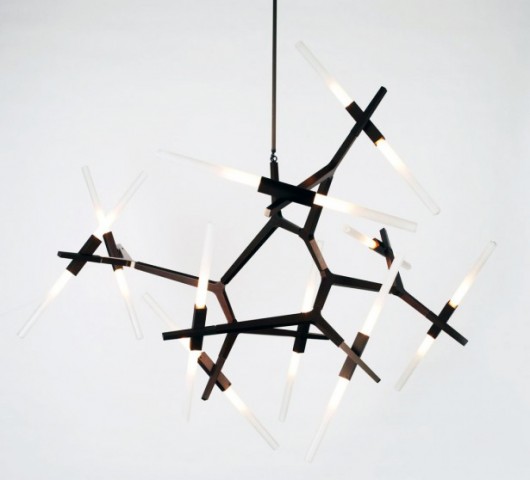
Above: Adelman’s original Agnes chandelier, for Roll & Hill, in a bronze finish
